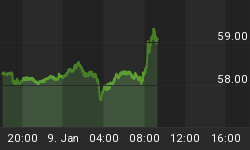Wall Street came to a halt recently, as Chinese e-commerce giant Alibaba made its Initial Public Offering debut. The media became myopically focused over this so-called "historic event" and by its celebrity founder Jack Ma. By the time the closing bell had rung, the hype and fanfare propelled Alibaba up 36 percent on its first day of trading and caused the world's largest IPO to display a market cap worth $231 billion. The investing public seems to have forgotten the dangers associated with disregarding valuation metrics -- Alibaba is trading at a Price to Book value ratio north of 27!
This hysteria is scarily reminiscent of the late 1990's, where an over-hyped stock market soared to new heights fueled by an accommodative Federal Reserve. Today, just as in 1999, a vastly superfluous money supply is finding its way into the pockets of any flimsy business model, with stock valuations that far outstrip the book value or potential profits.
During the peak of the late 90's tech bubble, the Price/Earnings ratio of the Nasdaq 100 was far in excess of 200. This confirmed investors were willing to pay very high prices for stocks, due to their delusional expectations of earnings growth. The problem, which is now easily acknowledged by using hindsight, was these companies never had the potential to reach the valuations ascribed to them -- all they had was eyeballs. But a central-bank manipulated increase in the money supply does strange things to investors, it ails them with a condition Alan Greenspan referred to as "irrational exuberance."
Today we see that same type of irrational exuberance, as investors fall over themselves to buy stock of a Chinese internet company, despite the fact the communist government of China retains total control over that country's internet. If China's Premier Li Keqiang decides to pull the plug on the company, it will become worthless overnight. However, while Alibaba does have revenue and earnings, the gross overvaluation of the enterprise echoes the tech bubble with frightening similarity.
But Alibaba is not even the best example of this current Fed-induced social media frenzy. The paragon of "irrational exuberance" would have to be the social media app called YO. What is the intellectual property behind this life-changing technology you ask? Brace yourselves; it just sends friends the thought provoking message "Yo," Yo was developed in eight hours and was launched on April Fool's Day of 2014. As idiotic as this idea may sound, it has a valuation of $10 million. The actual meaning behind the word "Yo" is subject to interpretation. And not even its founder, Mr. Arbel, whom I imagine is "Yoing" all the way to the bank, is willing to provide Webster's with a definition. Some presume its code for "hey", which I am sure will be the next app to raise millions of dollars very soon as well. But, more than likely the significance of this word really is, "Yo, this market is a bubble; get out now!"
But it's not just irrational investments, such as Yo, and overhyped IPO's, that are signaling a top to this market. There are technical indicators in the market that are also setting off loud warning bells. The breadth of the market is troubling to say the least, with nearly 50 percent of stocks in the NASDAQ down more than 20 percent from their peak in the last 12 months. Additionally, more than 40 percent have fallen that much in the Russell 2000 Index. In fact, the Russell 2000 index of smaller companies is now down over 4 percent on the year, and has in technical terms reached a "death cross". A death cross occurs when a stock or index's 50-day moving average trend line dips below its 200-day moving average; and is a sign momentum is fading.
It's clear as the Federal Reserve reins in its economic stimulus plans that the appetite for risk is narrowing. QE III totals $1.7 trillion worth of Treasury and Mortgage Backed Security purchases and this program ends in October. And the Fed's massive money printing scheme, which resulted in record-low interest rates for the last 6 years, has manifested in stock, real estate and bond bubbles occurring all at the same time.
After a Fed-induced five-year rally in stocks, which added almost $16 trillion to equity values, it's been three years since investors saw a 10 percent decline in the S&P 500. But we are starting to see the early anecdotal and technical signs that this market has gotten too frothy and a significant pullback is imminent. With the total market cap of stocks as a percentage of the economy at 117%, its highest point since the dot.com bust and far above its level reached in 2007, the toboggan ride down can't be too far off. Perhaps those who haven't gotten out in time will yell this as their portfolios plunge, "Yo, I should have known better."















